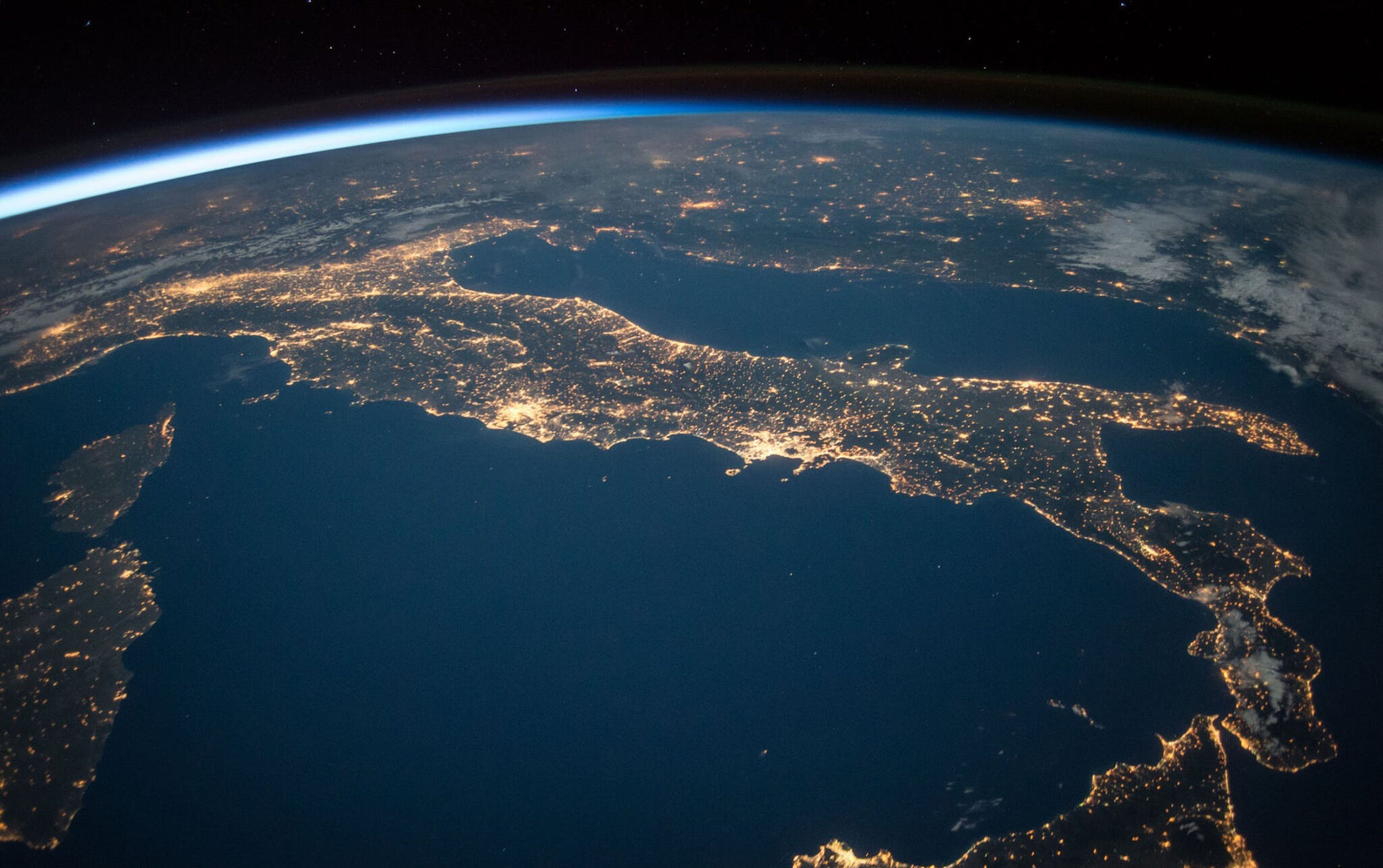Executive Summary
Space today has become big business that will only expand thanks to the excitement and focus driven by the likes of Bezos, Branson and Musk.
In the last decade, the space sector has seen over 50% growth in commercial space initiatives. The commercial portion of the space ecosystem saw $200 billion of investment in 1,500 companies.
The marketplace for space insurance today revolves around policies for physical assets, in particular satellite coverage. Coverage includes pre-launch testing and facility exposures, launch and orbital protection, as well as coverage for ground support services. For the nascent space tourism industry, the current practice is that all passengers sign a waiver of liability and assume full risk themselves. This is serving as a bridge until the insurance market can provide a solution.
An emerging insurance concern is that current policy language may not be contract-certain regarding space exposures. Even though there was never intent to provide space coverage, gray areas create Black Hole Risk. Agents, brokers, carriers and policyholders who may soon be participating in the space ecosystem must all pay attention.
Insurers need to prepare now for the exponential growth in this market segment and the growing needs of individual and corporate customers.
A Call to Action for the Insurance Industry
More crewed orbiters, payloads and satellites will launch, and space station construction is underway. By 2022, private citizen expeditions to the International Space Station (ISS) are planned, and in 2025 mobile space equipment will be launched. Space commercialization is not a theoretical concept, it is a reality. Insurance carriers must take the following steps now:
- Review policies for Black Hole Risk.
- Modify existing policies and procedures to ensure underwriting intent is clear for current products.
- Review legislation to determine where commercial insurance may be needed.
- Engage with and listen to the thousands of private entities providing infrastructure, distribution and application solutions for space as well as their brokers and agents to understand their future product needs.
- Determine long-term capital planning to sustainably enter the marketspace.
- Examine how participation in space insurance aligns with corporate environment, society and governance (ESG) goals.
- Partner with experts in science, technology, engineering and mathematics (STEM) and health fields as well as reinsurers to build actuarial data and insurance models to create products.
- Work with regulators to be at the forefront of shaping space insurance paradigms.
- Educate and upskill underwriters, adjusters, brokers and other stakeholders for this new insurance ecosystem revolving around space commerce.
A Galactic Opportunity
The present insurance market generates $6.3 trillion in annual premiums (life & non-life) supporting a world economy of $94 trillion. The space economy is expected to reach $1 trillion by 2040, and the colonization of one million people in two centuries has been credibly proposed. With all the same insurance needs on Earth being required in a new ecosystem, the celestial insurance market could reach $67 billion GWP. This is a once-in-a-generation opportunity for the insurance industry, and preparation and leadership must occur now.
Introduction
Exploration is one of the loftier birthrights of humanity, and the desire to discover the uncharted, a driving motivation. Over time, we’ve emerged from the cave, crossed vast oceans and now we reach for the stars. The modern insurance industry has played a critical role in this bold and adventurous heritage. Since the humble beginnings in a small coffee shop in London, insurance has supported those willing to leave safe havens and venture into the tempestuous unknown.
66 years ago this month, the first space race began when the U.S. and the Soviet Union each announced, within four days of each other, their intentions to launch satellites into space. This month marks the beginning of the second space race. Instead of two national superpowers, we have witnessed two commercial superpowers, in Richard Branson and Jeff Bezos, who, in aiming for the stars, have ushered in the commercialization of space. Their celestial ambitions are accelerating the pace of innovation and a surge of growth in the private side of the space sector. As investment in the space industry proliferates, insurance professionals must prepare today for space and near-Earth insurance solutions.
The space economy is approximately $450 billion, according to the Space
Foundation. The sector incorporates infrastructure such as satellite and
rocket production; distribution, which includes Earth-based companies that
connect cosmic networks; and applications, which are services that support
enterprises reliant on satellite and other orbital systems.
There will be short-term, medium-term and long-term opportunities, which must be supported by carriers, reinsurers and brokers alike. Insurance, as an industry, has always enabled and supported innovation. The space industry will be at the epicenter of invention and advancement for decades to come. Though some of the necessary solutions can be built upon traditional coverages, avant garde approaches will also be required to mitigate more contemporary risks. This second space age will test the limits of the insurance industry, but as it has done since its founding the industry must rise to the occasion as humanity strives to expand existing limits and traverse the universe.
The Space Insurance Market Today
The marketplace for space insurance today revolves around policies for physical assets, in particular satellite coverage, which is predominantly dominated by a handful of European insurers. Coverage includes pre-launch testing and facility exposures, launch and orbital protection and coverage for ground support services. Additionally, other specialty coverages such as manufacturer’s warranties, broadcast service and other business interruption are also available. Lloyd’s of London estimates that the space insurance market is about $500 million annually for satellites and non-human cargo. With respect to pre-launch, it is estimated that only $10 million to $15 million in premiums are generated annually, indicating that the majority of risk and premium occurs post-launch, considering the value of a lost satellite can range from $200 million to $400 million.
Interestingly, space insurance is not triggered until launch. Prior to liftoff, the insured assets are earthbound and therefore covered under any inland marine policies in force. As with all current pre- or post-launch insurance, it is property-related, as human passengers have been minimal. Even in the case of NASA astronauts and payload specialists, their occupational injuries are covered by the TREAT Astronauts Act.
The current practice witnessed on the most recent flights is that all passengers must sign a contract agreeing they are fully liable for their own safety. This is serving as a bridge until the insurance market can provide a solution. According to the New York Times’ DealBook, both Jeff Bezos and Richard Branson flew into space without purchasing any liability insurance. Neither of the corporations provided comment or further detail.
See also: ITL FOCUS: Catastrophic Weather
Black Hole Risk
An interesting topic within the insurance industry the last several years has been the discussion around "silent cyber." The term refers to the risk that policies that were not intended to cover cyber liability may in fact do so because the risk is not expressly excluded. In essence, there is a lack of contract certainty with respect to cyber liability. In this new space race, insurance companies may find their policies are not contract-certain regarding space exposures even though there was never an intent to provide such insurance. We call this situation Black Hole Risk, and it should not only be a concern for carriers but for policyholders who may soon be participating in the space ecosystem. Agents and brokers also need to consider Black Hole Risk, as policyholders who have claims denied will turn to their insurance advisers and question why they have no coverage. Insurance stakeholders should consider the following actions:
- Review life insurance applications and policies to determine if space travel is expressly excluded.
- Determine if the biological effects of space travel could be considered a pre-existing condition that would materially affect a health or workers’ compensation claim.
- Ask if the worldwide coverage endorsement on a products liability policy includes space if a manufacturer’s component part product was used beyond the Karman line and a loss occurred. These are gray areas all participants within the insurance industry need to contemplate now.
The Regulatory Basis of Liability in Space
To prepare for the complexities of insuring commercial expansion in space, carriers must understand the regulations on which liability surrounding space exploration is based. Early international regulations for space exploration include the 1967 Outer Space Treaty and the 1972 Liability Convention for Damage Caused by Space Objects. The 1967 treaty contains two primary arms control provisions, including the agreement that no countries can use nuclear weapons or weapons of mass destruction in orbit or in outer space, as well as prohibiting the installment of any type of military base or related structure on any celestial body. In addition, the treaty outlines international liability for damage caused by objects launched into space and establishes jurisdiction and control as being tied to the state party that launched the object. The Liability Convention of 1972 expanded on this concept by clarifying the responsibility of the launching state and liability for compensation due to damage from space objects as well as outlining procedures for the settlement of damages.
However, there is no clear indication that the Liability Convention intended to include or even contemplated liability related to commercial passengers of space objects. The Liability Convention states that the launching country is liable without consideration of fault for damage on or to the surface of the Earth as well as to aircrafts in flight, and may be liable if found at fault for damages occurring elsewhere, such as to another space object. The liability for passengers traveling on the space object itself are not specifically represented in either of those scenarios. In addition, the launching state nationality and passenger state of citizenship may be different, which may affect the applicability of these liability standards. Further, when the Liability Convention was drafted, private sector companies were not in the market of independently conducting space launches or space flight, so the determination of the launching state was more obviously tied to a government entity or country, while today responsibility may be less clear. It is important to understand the ramifications and applicability of these regulations when considering policy language.
In the U.S., the commercial space transportation industry was once regulated by the Department of Transportation, but oversight was transferred to the Federal Aviation Administration (FAA) in 1995 with the formation of the Office of Commercial Space Transportation. The purpose of this organization is to provide regulation for the U.S. commercial space industry, maintain compliance with international regulations, protect public and national security and support commercial space activities within the private sector, lobby for changes in regulations and procedures and strengthen the space transportation industry in the U.S. As a regulatory body, the FAA sets financial responsibility requirements for commercial spaceflight in the U.S. (see, Licenses & Permits: Commercial Space Transportation (faa.gov) for details). The FAA requires that commercial launches are protected by third party liability and government property damage insurance, which provides coverage for injury to the public or damage to government property. The Commercial Space Launch Act Amendments of 1988 provide alternative methods to meet financial responsibility as well as government backing for third-party claims above the insurance requirements, up to $1.5 billion. The Space Act of 2015 affirms this government backstop but only until 2025.
The 2004 Commercial Space Amendments Act excludes regulation of onboard passengers and instead requires informed consent and a signed waiver of liability. However, as insurance professionals are aware, exculpatory agreements are not fool-proof, and negligence by an operating party may still result in a lawsuit. In the case of space travel, this has yet to be tested in the courts. Insurance providers have stated that regulators will soon require liability policies for trips into space. Data on such trips is limited, and this makes the current product difficult to underwrite and price. There is a historical death rate for space travel of around 3%, but the volume of persons in space is a small sample size (553) in comparison with the insurance underwriting and actuarial approaches for these liability policies, and a large portion of this sample population is from decades ago, so using the historical number might not adequately account for changes in technological improvements.
The U.S. government has been supportive of a robust commercial space industry, and several codes and acts are dedicated to furthering the future of commercial space exploration. Many other countries have their own form of space regulation, which are submitted to the U.N. and can be viewed online: Space Law: National Space Law Database.
Industry Outlook
The space industry's immediate economic outlook remains speculative, yet optimistic. Opportunities exist, but there must be a willingness to plan and prepare now, for success years into the future. The U.S. Bureau of Economic Analysis wrote in December 2019 that the global space industry was $414.8 billion and employed 2.6 million workers in the U.S. in 2012. However, the space industry is not immune to the global effects of COVID-19. PricewaterhouseCoopers suggests that being "heavily tied to institutional budgets and overall wider public agendas, the space sector is expected to be impacted by changing government priorities and agendas."
According to Morgan Stanley, "the global space industry could generate revenue of more than $1 trillion or more in 2040, up from $350 billion, currently." The company also suggests that there is a growing partnership between public entities and private interests. Combining the forces of public institutions with private investment could result in more public interest that would push humanity deeper into space.
The word "unknown" is used to describe space not only in terms of science and understanding, but also with regard to the economic portion of the equation. The overall outlook is unknown, but many are predicting that untold riches can, and will, be made in outer space.
The extraordinary profits could be from any number of different outcomes, but there is a growing optimism about space mining. The space mining industry is currently not producing any economic gains. However, the market could grow to astronomical proportions if there is a feasible and practical mechanism to bring back elements from outer space to Earth that have the energy capacity to power all of New York City, or a new element that could cure cancer. Physics World published an article that outlined the ability to mine space by arguing that "legally, nobody can own an asteroid, but the US Space Act of 2015 allows companies to own the materials they mine from bodies in space." Some companies are ready now to use satellites to find mining deposits undiscovered on Earth, according to an article written for the Wharton School of Business. But the same article indicates that "for decades, relatively easy access to space and the big profits to go with it have dangled elusively just over the horizon," thus adding to the unpredictable future economic outlook overall in the space industry.
See also: Digital Revolution Reaches Underwriting
While these initiatives are not fully commercialized yet, they are not just theoretical either, and the insurance industry needs to begin addressing these very real needs. During the July 11 broadcast of the Virgin Galactic flight on Bloomberg TV, commentators provided the following insights:
- 2018 saw 2,000 satellites in orbit, which will be 100,000 in 15 years
- All data centers will be in space, and internet and cell cover will be uninterrupted worldwide 24/7 in 15 years
- 600 to 700 people have already paid $200,000 for suborbital Virgin Galactic flights, which are scheduled to take off in 2022
- Axiom plans to have all-inclusive 10-day space excursions to the International Space Station in 2022 for citizen astronauts
Insurance as a Space Facilitator
Insurance professionals must prepare today for needed space and low-orbit insurance solutions. New insurance products will enable continuous innovation within this evolving market, providing a safety net for costly assets and precious lives. However, for the insurance industry to support human expansion into space, it will need supportive partnerships, regulatory clarity and sensitivity to environmental and social issues.
Payload Share
As this world looks beyond its limits for new resources, the insurance industry can play a pivotal role in facilitating these complex expeditions. As rare earth resources become more scarce and the mining industry continues to pollute the air and land while using dangerous chemicals in its process, we are entering an unsustainable cycle. Asteroid mining could bring to Earth nearly unlimited resources relative to what is available here and do so in a more environmentally viable manner. Asteroid mining is not possible today, but as space travel technology continues to evolve and the cost becomes cheaper, we have the opportunity to turn this into a reality. This is where the insurance industry has the opportunity to partner. These projects will obviously be quite large and expensive, especially initially, so a new product or payment mechanism can be created. Aside from just a large premium on the front end, which could potentially hinder these efforts, insurers could instead use a payload share as part of the compensation for transferring these risks. Coverage limits for failure would be provided, but upon successful mission the insurers would receive a percentage of the value of the haul in lieu of or in combination with premium. Such an arrangement would align interests and aid the space mining industry in creating a safer and more sustainable environment.
Enhanced Satellite Coverage
Current single satellite launch coverage has a policy period from launch vehicle separation to establishment of intended orbit plus one year. In-orbit coverage protects the asset typically for up to 15 years. With newer satellites that can have life expectancies of 18 years or more, there may be an increasing need for extended life coverage. Additionally, satellites will be launched with increased frequency as part of a constellation of orbiters. Multiple satellites may be launched together or separately over a period. New coverage will be needed to cover not just the individual satellites but the operation as a network as well as the elongated period required to position the constellation as single satellites are added to the ecosystem.
Space Debris Abatement Coverage
As activity in both low-Earth orbit (LEO) and geospatial equatorial orbit (GEO) increases, more space debris will accumulate. As on Earth, it should be expected that commercial enterprises will be liable for space pollution. It is estimated that there are already over 750,000 pieces of space junk in orbit. Coverage for pollution legal liability or contractor’s liability insurance to support abatement companies will be needed. The European Space Agency (ESA) has already signed the first contract with ClearSpace to develop the Space Claw, a debris removal space vehicle that is expected to launch in 2025. Japan’s answer to space junk is to develop wooden satellites, which would burn up on re-entry. This poses additional insurance considerations, as the outer limits are developed, regarding the possible myriad of building material and composite options that could be used and their lifespan before failure.
Space Technology Wraps, Warranties, Construction Bonds and Product Liability
Terrestrial off-shore space sports, stellar space stations, galactic resorts, O'Neill cylinders, and colonies on the Moon and Mars, in addition to mining asteroids for minerals, water and other natural resources, will require incredible levels of ingenuity and resultant technology to develop this infrastructure. Performance bonds for technology installations and construction developments will be crucial. Extended warranty coverage on both the life of the technology as well as its optimal operational efficiencies will be sought-after protections, too.
Even less technology focused, more traditional companies may need new protections soon. Consumer products manufacturer Procter & Gamble announced in July 2021 a partnership with NASA to develop fully degradable Tide brand detergent that can be used on extended duration trips to the Moon and Mars. We will see more of this innovation from non-space focused corporations, and new products consumed in new environments will require for-the-moment coverage.
Space Catastrophe Annuity Program
While we are experiencing heady days after two successful crewed launches by Virgin Galactic and Blue Origin, inevitably there will be setbacks and tragedy. Should such events occur too early in the days of this new space age investment, interest could wane. Consideration should be given to developing a long-term, public-private insurance partnership to share in the cost of a space catastrophe. Sharing of risk between governments and commercial partners would ensure the sustainability of the drive to space. As mentioned, the SPACE Act of 2015 provides a loss back-stop for catastrophic launch events, but with a sunset provision in 2025. A longer-term concept was developed in the 1950s to encourage the growth of the nuclear industry. A space cat annuity program modeled off the Price-Anderson Nuclear Industries Indemnity Act of 1957 could serve as a more sustainable solution.
Space Tourism Travel and Accident Coverage
With space tourism quickly becoming a reality, there will soon be a market for space travel and accident coverage. As of July 9, 2021, it has been reported that approximately 600 people have reserved tickets for future space flights with Virgin Galactic. The numbers will likely increase as successful trips are completed, competition increases and prices start to decline.
Short space flights may not result in some of the more debilitating long-term effects of extended space travel, but the launch process itself creates a unique experience for the human body that could result in death or injury. Astronauts train extensively for space travel, but tourists will not be able to dedicate the same amount of time and effort to prepare. In addition, during an emergency in space it is unlikely that the vessel will have adequate medical equipment or the freedom of movement to provide medical attention to passengers in distress. In the event of a medical emergency in flight, extraction from the landing site may need to be arranged if it is remote or not near a medical facility. It is also possible that a space vessel could veer off course due to emergency, and unexpected travel may be required to return a passenger to the planned landing location. These items may be addressed with space tourism travel and accident coverage.
Reviewing a risk for insurability will rely heavily on knowledgeable underwriters who understand the mechanics of space flight, regulatory requirements and medical considerations for the screening and training of passengers. Due to the complex and specialized nature of space travel, insurers should seek partnerships with external experts who can guide underwriting requirements and train future space insurance experts to have a holistic view of the risks at hand.
Citizen Astronaut Life, Accident and Health Coverage
Additional insurance considerations include Citizen Astronaut Life, Accident and Health coverage, which pose interesting hurdles as, in many cases, coverages particular to these exposures are largely being constructed or non-existent. Which is not to say that they are not carefully being considered or sought after. For example, NASA has “called for responses from the industry for its plans for a liability framework for privately funded missions to the ISS. NASA's plans include requiring private astronauts to buy life insurance.” There are also questions raised about which coverage types apply with regard to space tourism and whether space tourism falls under aviation or space insurance. This is particularly important in the case of death, as rules surrounding airline responsibilities have had rules and precedents established in the case of passenger fatality. The same cannot be said of space tourism.
As government employees, NASA is able to grant certain benefits and coverages to its astronauts, including FEGLI (Federal Employees’ Group Life Insurance); however, the same is not necessarily the case with private or citizen astronauts. Carriers have historically shied away from providing coverages to those in high-risk professions, and in many cases even list specific excluded professions. In the U.S. private sector, workers’ compensation coverage is required in most cases. Companies may soon have employees traveling into orbit to help with space infrastructure development, which would be a new exposure not currently contemplated in underwriting.
Similarly, accident and health policies are largely provided by employers to employees in the case of sickness, accidental injury or accidental death. With space tourism, a new version of these policies may be needed to more specifically address space-specific exposures.
Satellite-Supported Data Centers
With cyber risk being one of the most prevalent risks on the minds of top executives through the global economy, everyone from the C-Suite to the regulators to the end customer is wondering how companies are going to be protecting their data. Companies today are already looking at data centers in orbit, by building servers into satellites. These companies will be providing services to the entire commercial space industry, which will be supporting trips to the Moon, Mars and beyond. The concept of “Space Infrastructure as a Service” or satellite Internet of Things are terms with which all insurance professionals looking into space insurance should begin to familiarize themselves.
Satellite Enhanced Cat and Climate Modeling
Back on Earth, satellite imagery has long been a part of catastrophe modeling. As the number of satellites launched into space skyrockets and the technology on each satellite continuously improves, insurers will have access to a much greater availability of observational data. Insurers will be able to use this data to more quickly and accurately assess loss in affected areas. The greater coverage being provided by the great number of satellites will allow for markets to be opened up that were previously untapped or incorrectly underwritten or modeled. With more consistent, higher-quality data, insurers will be able to insure the entire globe better. If the costs get to an extremely affordable level, do we see insurers or CAT modelers launching their own proprietary satellites into orbit that allow for further differentiation within the property insurance market?
See also: A Quarantine Dispatch on the Insurtech Trio
Partnerships
Massive undertakings such as these certainly require work and collaboration from various groups, including industry trade associations, reinsurers and commercial partnerships.
As far as trade associations, there are numerous organizations engaged. The American Astronautical Society compiled a substantial list that contemplated various sub-categories such as international federations, institutes and professional associations, international space agencies, international space education organizations and U.N. organizations. This demonstrates that there is significant engagement on a global scale.
Regarding reinsurers, many large carriers are currently participating. A few notable companies include AXA XL, Hannover Re and Munich Re. Additionally, there are space products coming out of Lloyds of London, which are backed by as many as 18 syndicates, including Brit and Hiscox.
Commercial partnerships are also playing a critical role in driving space activities forward. Currently, there are three primary players in this space: SpaceX, Virgin, and Blue Origin. Backed by iconic billionaires Elon Musk, Jeff Bezos and Sir Richard Branson, these organizations have already committed to continuing their missions. Interest and demand in this area continue to grow. Richard Branson recently said that, in addition to the keystone organizations already mentioned, there is room for 20 space-tourism-centered organizations to compete for space-tourism passengers.
Finally, these partnerships depend on the support and participation of scientists and academics, without whom none of these accomplishments or goals could be accomplished.
Regulatory Outlook
In the regulatory environment, we can expect some big changes as the U.S. and other countries see greater opportunities for the commercialization of space. We believe that more clarification will emerge regarding liability and standards of care for civilians traveling on spacecraft. There will be more definition around liability stemming from launch site location/control and clarification in regard to questions on whether citizenship plays a role in liability determination. The U.N.’s Office for Outer Space Affairs will continue to advocate for the peaceful use of space and will continue supporting their core guidelines, including:
- Setting policy and regulatory framework for space activity
- Promoting the safety of space operations
- Encouraging international cooperation, capacity-building and awareness
- Promoting scientific and technical research and development
Environmental Considerations
This new space age coincides with an increased focus on environmental, social and governance (ESG) issues. As commercial enterprises push into space endeavors, their insurance partners need to consider how they align their support of policyholders with their own corporate ESG values.
The most obvious issue in this area is the pollution of space. As mentioned, a problem with space junk already exists. Carriers can promote environmental safety by supporting the innovations of space debris abatement technologies. Space initiatives also provide the opportunity to mitigate climate change here on Earth. Space mining has the potential to eliminate the need to extract fossil fuels from the Earth as well as create additional supplies of water. On CNN, during the Blue Origin launch broadcast, Adam Frank of the University of Rochester commented that space mining could allow for one million people to live in space in the next 200 years. These advancements would reduce global warming, and with more jobs and new places to live could also address income inequality and overpopulation. Insurance companies that back these industries would be doing so aligned with their ESG aspirations.
Conversely, however, an exponential commercialization of the outer limits would have more satellite constellations in orbit, more space traffic and a higher likelihood for collision, creating more junk in space and possibly debris falling to Earth. We also must recognize that, while colonization of space could be attainable in the next century, in the meantime, with billionaires speeding to the Karman line, there is the potential for a widening of inequities.
Insurance carriers therefore not only have to weigh the financial aspects of risk vs. reward when deciding if they want to deploy capacity in support of this new space age, but also how their method for choosing whom to support aligns with their corporate values.
Key to striking this balance is a robust governance framework. As discussed, partnering with stakeholders from investors, customers and regulators, to technology experts, reinsurers and in many cases government agencies on national security matters is critical as insurance companies decide to enter this industry sphere.
Conclusion
There is no way to know what will eventually come out of this new great space race. Throughout the history of NASA, many products have been discovered or invented that have become extremely commercially viable. These items include; camera phones, scratch-resistant lenses, CAT scans and radiography, LED lights, athletic shoes, non-detonation land mine removal techniques, water purification systems, the dust buster, ear thermometers, home insulation, jaws of life extraction tools, wireless headsets, memory foam, freeze dried food, adjustable smoke detectors, baby formula, artificial limbs, the computer mouse and the portable computer. While NASA did not set out to create likely commercially successful products, the research and ingenuity required to propel humankind into the unknown and unexplored made all of these examples possible.
This is a once-in-a-generation opportunity for the insurance industry to provide a social good to an entirely new celestial biosphere. Since its early days, the industry has supported innovation, provided security and defused and distributed risk so human endeavors are achievable. The time is now for the insurance industry to prepare and show leadership in this New Age of Space.












